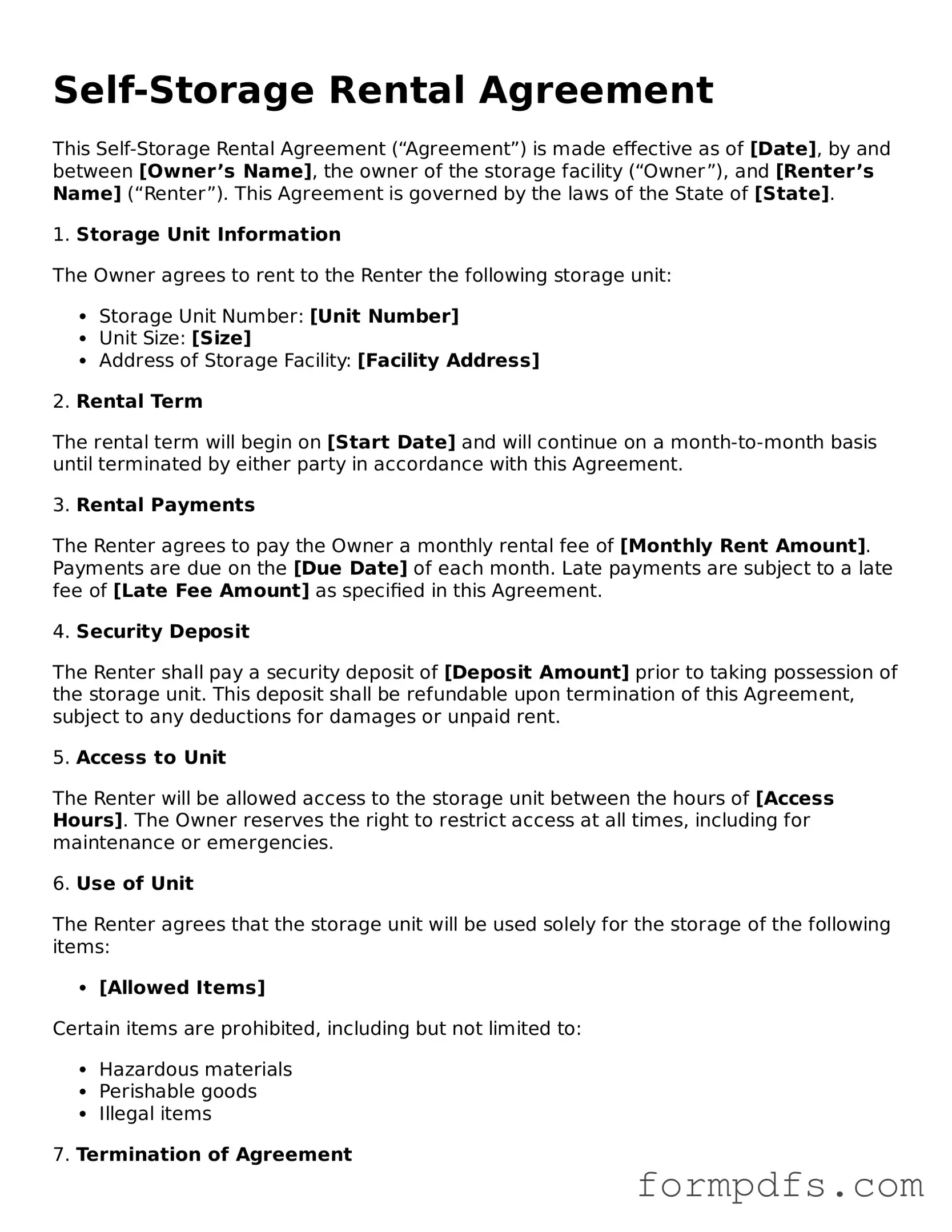What is a Self-Storage Rental Agreement?
A Self-Storage Rental Agreement is a legal document that outlines the terms and conditions under which a storage facility allows a customer to rent a storage unit. This agreement typically includes details such as rental rates, payment terms, security deposits, and the duration of the rental period. It serves to protect both the storage facility and the customer by clearly defining their rights and responsibilities.
What information do I need to provide to complete the agreement?
To complete a Self-Storage Rental Agreement, you will need to provide personal information such as your name, address, phone number, and email. Additionally, you may need to include payment information, details about the storage unit you wish to rent, and any specific requirements or preferences you have regarding access or security.
How long is the rental period for a storage unit?
The rental period can vary based on the agreement you sign. Most agreements offer options for monthly rentals, but some facilities may allow longer terms, such as six months or a year. It is essential to review the rental period specified in your agreement to understand your commitment and any renewal terms.
What happens if I need to terminate the agreement early?
If you need to terminate the agreement before the end of the rental period, you should review the terms outlined in the document. Many agreements require a notice period, which can range from a few days to a month. Additionally, early termination may result in penalties or the forfeiture of your security deposit. Always communicate with the storage facility to discuss your situation.
Are there any fees associated with renting a storage unit?
Yes, renting a storage unit often comes with various fees. These may include a one-time administrative fee, a security deposit, and monthly rental fees. Some facilities may also charge for late payments or for accessing the unit outside of regular hours. It is important to ask about all potential fees before signing the agreement to avoid unexpected costs.
Can I access my storage unit at any time?
Access to your storage unit typically depends on the facility's policies. Many storage facilities offer 24-hour access, while others may have specific hours during which customers can access their units. Check the agreement for details regarding access hours and any procedures you need to follow to enter the facility.
What should I do if I have a dispute with the storage facility?
If a dispute arises with the storage facility, the first step is to review the Self-Storage Rental Agreement for guidance on resolution procedures. Many agreements include a process for addressing complaints or disputes. If necessary, you may also consider reaching out to local consumer protection agencies or seeking legal advice to understand your options.
